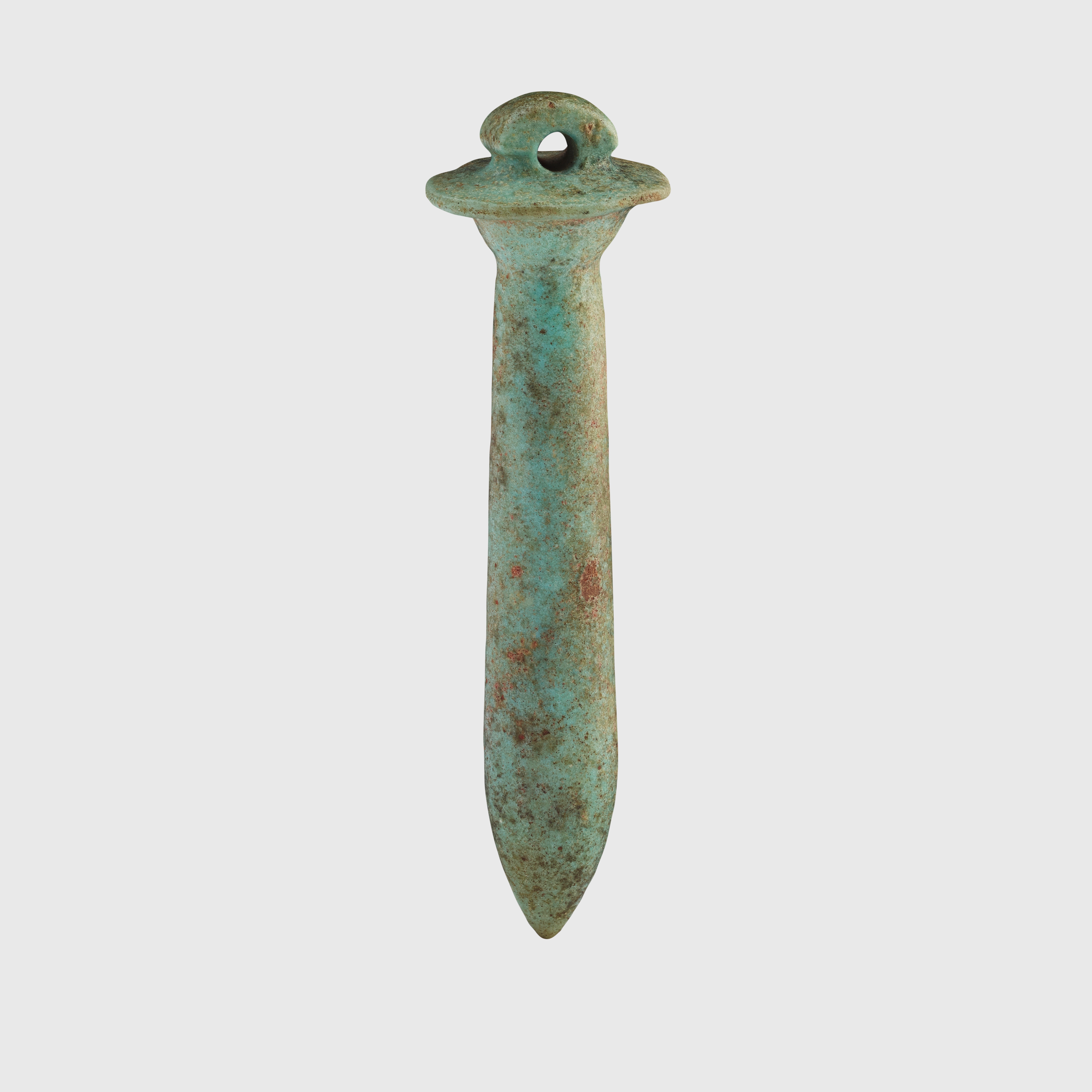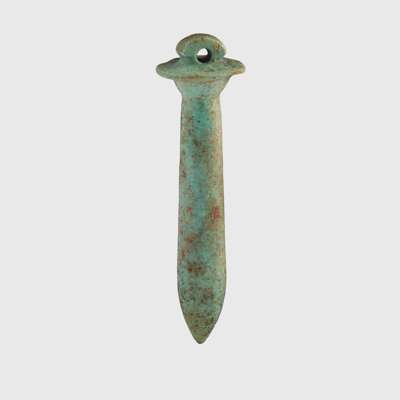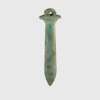
Lot 98C

ANCIENT EGYPTIAN PAPYRUS SCEPTRE WADJ AMULET
EGYPT, LATE PERIOD, C. 664 - 332 B.C.


African & Oceanic Art, Natural History and Ancient Art
Auction: 30 July 2025 from 14:00 BST
Description
faience, of elongated, tapering form, the shaft terminating in a rounded base with incised motif, loop above for attachment
Dimensions
5.2cm tall
Provenance
John Hunt, Mayor of Preston (fl. 1920s), United Kingdom, thence by descent
John Hunt was the Mayor of Preston during the 1920s and played a key role in the town’s civic life. In 1927, he hosted King Fuad I of Egypt during the monarch’s visit to Horrockses Cotton Mills. As a gesture of thanks, Hunt was gifted a number of Egyptian artefacts, including the present piece.
Footnote
This amulet represents a papyrus column or sceptre, with a suspension loop at the top. Its form, colour, and material all emphasise themes of vitality and renewal. The Egyptian word for papyrus, wadj, translates as “green” or “fresh,” reinforcing its association with life and regeneration. Made from blue-green faience, the piece would have been intended to confer protective and life-giving qualities. Though difficult to date precisely, such amulets appear from the New Kingdom onward and became especially common during the Late Period.
For similar, please see: The Metropolitan Museum, New York, accession number 10.130.1818

